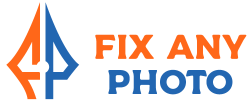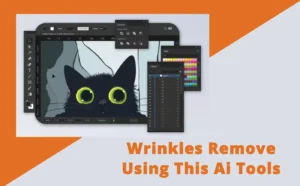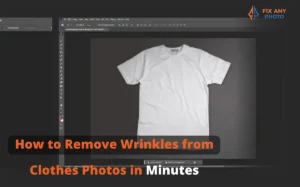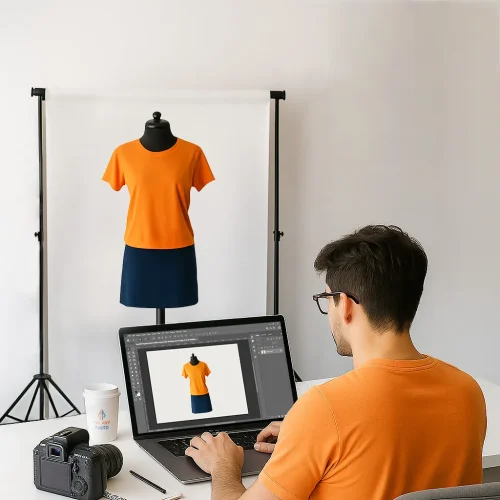Let’s be real, in e-commerce, photo editing isn’t optional. It’s what turns browsers into buyers.
Research shows 90% of online shoppers say product photos are the biggest factor in their buying decisions. And when it comes to fashion, that clean, “floating shirt” look, the ghost mannequin effect, has become the industry standard.
But here’s the truth: while DIY editing gives you control, it often becomes a time trap. Outsourcing, on the other hand, saves time, ensures consistency, and scales with your business, making it the smarter move for most brands. Still, every business is different.
Let’s break down both sides and see which one actually helps your brand shine , without driving you crazy in Photoshop.
The DIY Route Full Control, But at What Cost?
When I first started editing ghost mannequin photos, I thought, “How hard could it be? Just remove the mannequin and blend the collar.”
Two hours later, I was still zoomed in at 600%, trying to fix jagged edges around a shirt neckline. That’s when it hit me DIY editing gives you full control, but it also demands full commitment.
Doing your own ghost mannequin edits can be a rewarding challenge, especially if you love creative work or want to sharpen your Photoshop skills. But before you dive in headfirst, let’s look at what you’re really signing up for.
Pros of Doing Ghost Mannequin Edits Yourself

1. Total Creative Control, Your Brand, Your Style
When you edit your own product images, you decide how every photo looks, from lighting balance to shadow softness.
You can fine-tune every fold, every reflection, every color tone until it perfectly matches your brand aesthetic.
If you’re a fashion photographer or a boutique owner with a specific visual identity, DIY editing ensures your photos always “feel” like you.
For instance, maybe you love warm tones or softer shadows, outsourcing might get close, but only you know exactly what “right” looks like for your brand.
2. Instant Revisions – No Waiting, No Emails
When you handle the edits yourself, there’s no waiting for revisions or back-and-forth feedback loops.
You can fix a missed edge, tweak the exposure, or remove lint on the fly.
This is especially handy if you’re working on tight deadlines or need to upload products quickly.
A small batch of images? DIY can definitely save you a few hours of coordination time.
3. Budget-Friendly (At Least at First Glance)
If you’re running a small business, every dollar matters.
At first, DIY ghost mannequin editing seems like the cheaper route, you already have the photos, so why not handle the edits yourself?
For brands with limited product ranges (say, 10–15 items), DIY can indeed cut costs in the short term.
You can start with free tools or trials, like Photoshop’s 7-day trial or affordable apps such as Photopea and GIMP, to get the basics done.
4. A Great Learning Experience
Even if you eventually outsource, knowing how ghost mannequin editing works gives you an edge.
You’ll better understand what to expect from professionals, how to judge quality, and how to communicate your vision clearly.
Think of it as learning how to cook before hiring a chef, you’ll know what “good” looks like.
The Hidden Downsides of DIY Editing

1. The Time Sink No One Talks About
Creating a clean, natural ghost mannequin effect isn’t a quick Photoshop job, it’s a process. You’ll need to mask, blend, align, color-correct, and adjust shadows for realism.
For beginners, this can take 30–60 minutes per image. Multiply that by a full catalog of 100+ products, and you’re suddenly spending entire days, or weeks, in post-production.
That’s time you could’ve used for marketing, inventory, or actually selling your products.
2. Software and Hardware Costs Add Up
Editing isn’t “free” just because you’re doing it yourself.
Here’s what DIY ghost mannequin editing really costs beyond your time:
-
Adobe Photoshop: ~$22.99/month
-
Lightroom or plug-ins (for faster batch edits): another $10–20/month
-
A decent computer and monitor: $800–$1,500 minimum for color accuracy and speed
-
Backup storage & calibration tools: extra ongoing expenses
Over time, these “little tools” add up, and that’s before factoring in training or trial-and-error time.
3. The Learning Curve Is Steep
Ghost mannequin editing involves complex steps:
-
Clipping paths for precise cutouts
-
Image masking to remove fine details (like collars or hair)
-
Liquify & warp tools for reshaping clothing naturally
-
Shadow compositing to add realism
Without proper experience, it’s easy to end up with flat or fake-looking results, harsh edges, mismatched lighting, or distorted shapes. And once you’ve uploaded those to your store, customers will notice.
I’ve seen countless sellers lose credibility simply because their product photos didn’t look polished.
4. Inconsistent Results Can Hurt Your Brand
Consistency is key in e-commerce.
If half your photos look sharp and the rest look dull or uneven, your website immediately feels less trustworthy.
DIY editing often leads to this problem, different days, different lighting, different energy levels.
Professional retouchers, on the other hand, use preset workflows and calibrated monitors to keep your entire catalog looking uniform and cohesive.
Real Talk
When I first tried ghost mannequin editing myself, it took me around 45 minutes per image, and I still had to redo half of them. The second attempt was faster, sure, but I started to realize that for bulk edits, DIY wasn’t sustainable.
That’s when I understood: control feels great, but so does sleep.
The True Cost of “Free” Editing
Let’s talk numbers for a moment. DIY might seem free because you’re not paying someone else, but your time has value, especially if you’re running a business.
Here’s a quick breakdown:
| Task | Average Time (per image) | Cost if You Value Your Time at $25/hr | Outsourcing Cost (per image) |
|---|---|---|---|
| Ghost mannequin edit | 45 minutes | $18.75 | $1.50–$3.00 |
| Color correction | 10 minutes | $4.16 | Included |
| Shadow creation | 5 minutes | $2.08 | Included |
| Total per image | 1 hour | $25.00 | $3.00 or less |
So, while you might not pay cash upfront, DIY ghost mannequin editing can quietly cost you up to 8× more in time and missed opportunities.
If you only have a handful of products, it’s manageable. But once your catalog starts growing, outsourcing becomes not just convenient, but strategic.
Outsourcing Ghost Mannequin Editing – The Professional Edge

After spending countless nights doing ghost mannequin edits myself, I realized something: there’s a reason professional retouching studios exist.
While DIY can work for small batches, once your catalog starts growing, outsourcing becomes less of a luxury – and more of a business necessity.
Here’s why the pros often do it faster, cleaner, and smarter.
Why Pros Do It Better
1. Specialized Retouchers = Better Results
Professional editors aren’t just “good with Photoshop” they’re specialists in apparel retouching and ghost mannequin editing.
They understand how fabrics behave, how shadows fall naturally, and how to maintain texture while removing mannequins flawlessly.
A trained retoucher knows that a silk blouse needs soft highlights, while a leather jacket needs contrast and depth. They don’t just erase, they enhance realism.
That’s the level of precision that makes your product photos feel like something out of a premium brand catalog.
2. Consistent Quality and Faster Turnaround
Professional editing teams work with standardized workflows and calibrated color systems.
That means every photo, whether it’s your first or your thousandth, will have the same tone, light balance, and quality.
Plus, with an experienced studio, turnaround time is often just 12–24 hours, even for bulk batches.
Compare that with the hours (or days) it can take to finish a small batch manually, and it’s easy to see how outsourcing can scale your workflow effortlessly.
3. Scalability for Growing Businesses
When your store grows from 10 to 1,000 SKUs, DIY editing simply can’t keep up.
Outsourcing gives you scalability, you can send in hundreds of images at once and get them back ready for upload.
No need to hire an in-house team, buy more software licenses, or train staff. You just send, review, and publish.
This is especially valuable during high-demand periods, like fashion drops, sales events, or seasonal product launches, when speed and consistency make or break your timeline.
4. Access to Advanced Tools and Automation
Professional editors use enterprise-level software, AI-assisted tools, and color management systems that go beyond what most DIY setups can handle.
They can batch-process large volumes of images while maintaining perfect edges, color accuracy, and shadow detail.
Many editing companies also use automated workflow systems, meaning your images are tracked, quality-checked, and stored securely at every stage. The result: faster turnaround, zero clutter, and flawless output.
If you’re planning to outsource and want to be sure you’re working with the right team, this practical guide on choosing a ghost mannequin editing service can help you make a confident decision.
Common Concerns About Outsourcing (and How to Solve Them)

Even with all the benefits, some brands hesitate to outsource because of a few common worries. Let’s address those one by one.
1. “I’ll Lose My Creative Control.”
Totally valid, your brand’s look matters.
But the best outsourcing partnerships are collaborative, not one-sided.
Start by:
-
Providing sample images that reflect your desired style.
-
Sharing brand guidelines (color tones, backgrounds, shadow intensity, etc.).
-
Asking for test edits before committing to a bulk order.
Most professional services offer free trial edits, so you can review the quality and communication before you dive in.
Once you build that relationship, you’ll find the best editors can actually replicate your creative vision better than you expected.
2. “What if Communication or Revisions Take Too Long?”
Clear instructions are everything.
When you outsource, make sure your brief includes:
-
File naming conventions
-
Desired background color (white, transparent, gradient)
-
Image size/resolution
-
Sample before-and-after references
Many professional editors use project dashboards or cloud systems where you can leave comments, approve files, and request revisions in real-time, just like working with your own team.
3. “Are My Photos and Data Safe?”
A legitimate editing company takes data privacy seriously. Look for vendors who use secure file transfer (SSL), confidentiality agreements (NDAs), and cloud backups for every project.
Avoid freelancers who ask for open access to your drive or personal accounts, always use official upload portals or encrypted links.
Real Example: Before & After Outsourcing
Let me give you a real-world story from a small apparel seller I worked with last year. They ran a Shopify store with about 200 products and handled all the ghost mannequin edits themselves.
Each photo took roughly 40 minutes, and they were spending more than 80 hours per week just editing images. Their upload schedule slipped, and their marketing campaigns were always behind.
They decided to try outsourcing, starting with a trial of 100 images.
Here’s what happened:
| Metric | Before Outsourcing | After Outsourcing |
|---|---|---|
| Editing time | 40 mins/image | 8 mins/image (by pros) |
| Cost per image | “Free” (but ~$25/hour in lost time) | $2.00 |
| Weekly upload volume | 40–50 photos | 250+ photos |
| Conversion rate | 1.1% | 2.3% (+109%) |
| Time spent editing | 80 hrs/week | 5 hrs/week (reviewing only) |
Within two months, their store’s revenue jumped by 40%, simply because they could publish faster, look more professional, and stay consistent.
That’s the power of letting experts handle what they’re best at.
DIY vs. Outsourcing – A Side-by-Side Breakdown
Here’s a clear, visual comparison to help you decide what fits your workflow best:
| Factor | DIY Editing | Outsourcing |
|---|---|---|
| Cost per image | “Free,” but time-expensive | $0.50–$3.00 per image |
| Time per image | 30–45 minutes | 5–10 minutes turnaround |
| Quality consistency | Varies with skill | Professionally uniform |
| Creative control | Full control | Shared (but adjustable) |
| Learning curve | High | None |
| Best for | Small batches, personal projects | Large e-commerce catalogs, fast launches |
Verdict: DIY is great for creative testing or low-volume needs, but outsourcing wins hands-down for speed, consistency, and long-term scalability.
Hybrid Approach – The Best of Both Worlds

If you’re not ready to fully hand over your editing, don’t worry, you don’t have to.
Many successful e-commerce sellers use a hybrid workflow that blends both approaches.
Here’s how it works:
-
You handle the creative selection: choosing the best shots, cropping, or resizing.
-
Then, you outsource the technical edits: ghost mannequin removal, color correction, and retouching.
This way, you keep creative control while letting professionals handle the heavy lifting.
When to Mix DIY and Outsourcing
-
Seasonal sales or bulk uploads: Outsource during busy seasons to meet deadlines.
-
Product launches: Use pros to ensure your new collection looks flawless across every listing.
-
Routine maintenance: Keep small tasks (like resizing or renaming) in-house to stay efficient.
Pro Tips for a Smooth Handoff
-
Keep file names clear: e.g., “SKU123_Front.jpg” instead of “Image1.jpg.”
-
Use a shared folder system (Dropbox, Google Drive, or FTP).
-
Provide a style guide — background color, shadow type, exposure level.
-
Batch your uploads: Send all similar products together for uniform results.
-
Review the first batch carefully: Give feedback early to lock in your preferred style.
Once you establish that rhythm, outsourcing becomes seamless, it feels less like “handing off” and more like expanding your team.
How to Choose What’s Right for You

By now, you’ve seen both sides of the ghost mannequin editing debate, the creative freedom of DIY and the efficiency of outsourcing. But how do you know which one fits your business best?
Let’s break it down with five simple but powerful questions.
Ask Yourself These 5 Questions
1. How many images do you need to edit each week?
If you’re editing fewer than 20 images per week, DIY might be manageable. But once your catalog starts growing, or you launch new collections frequently, outsourcing keeps your workflow consistent and on schedule.
2. Do you have the skill (and patience) to meet your own deadlines?
Ghost mannequin editing requires precision: masking, collar alignment, color correction, and shadows.
If you’re constantly racing deadlines or juggling other tasks, spending hours in Photoshop may cost more in lost time than outsourcing ever will.
3. How much is your time worth per hour?
Here’s the golden question.Take your hourly rate, or the value of what you could earn in that same time, and multiply it by the hours spent editing.
You’ll often find that outsourcing at $2 per image costs less than doing it yourself once you account for your own labor.
4. Does your brand demand a specific editing style?
If your photos have a unique artistic direction (e.g., warmer tones, stylized shadows, or creative cropping), you might prefer DIY or a hybrid model.
But if you’re going for clean, consistent, and professional, like major fashion retailers, outsourcing can replicate that look at scale.
5. Are you scaling soon?
If you’re expanding your product line, preparing for seasonal campaigns, or growing on platforms like Shopify or Amazon, outsourcing lets you scale quickly without compromising quality.
Pro Tip: Imagine a quick yes/no flowchart:
-
Few products, extra time → DIY or Hybrid.
-
Growing catalog, limited time → Outsource.
-
Launching new line or sale → Hybrid or Outsource.
This simple decision map helps you make the smart call every time.
Insider Tips for Smooth Ghost Mannequin Outsourcing

Choosing the right editing partner can make all the difference between average and exceptional results.
Here’s how to make outsourcing feel effortless.
1. Pick the Right Photo Editing Company
Ask these questions before committing:
-
Do they specialize in apparel and ghost mannequin editing?
-
What’s their average turnaround time?
-
Can they match your preferred editing style (ask for samples or trials)?
-
Do they offer revision support or satisfaction guarantees?
-
How do they handle data security and file confidentiality?
Reputable editing companies will answer these confidently and often provide a free test edit to prove quality before you start.
2. Communicate Your Editing Style Clearly
Outsourcing only works when expectations are clear. Always share:
-
A few sample “ideal” images that represent your brand look.
-
A style guide (background color, lighting, contrast level, shadow intensity).
-
Any retouching rules (like keeping natural fabric texture).
This ensures your editor doesn’t just remove mannequins, they enhance your brand’s look consistently.
3. Use the Right File Formats
For professional-quality results, share your images in formats that retain details:
-
TIFF or PSD for editing (they preserve layers).
-
JPEG or PNG for final exports, depending on your platform’s needs.
Avoid sending compressed images, they limit what your editor can do.
4. Understand Turnaround Time and Revisions
A solid editing partner will provide a clear delivery window (usually 12–48 hours).
They should also allow free revisions for minor tweaks, like shadow adjustments or tone corrections, within reason.
Tip: For bulk orders, plan ahead by sending batches weekly or bi-weekly, so there’s no rush when deadlines hit.
The Final Verdict – Smart Move or Time Trap?
If your goal is speed, brand consistency, and polished visuals, outsourcing ghost mannequin editing is a smart investment.
You’ll save time, reduce stress, and keep your catalog looking premium – all while focusing on marketing, customer experience, and sales.
But if you enjoy hands-on creative work and have time to experiment, DIY can be deeply rewarding, too.
The key is knowing your limits, when control stops being empowering and starts becoming exhausting.
Remember: The smartest brands don’t do everything themselves – they do what they do best and outsource the rest.









